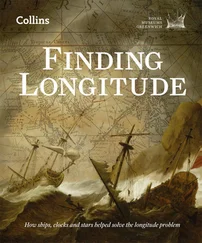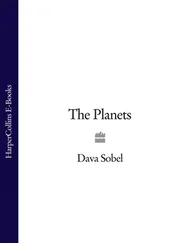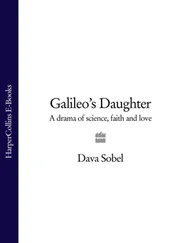
For my mother, Betty Gruber Sobel, a four-star navigator who can sail by the heavens but always drives by way of Canarsie.
Cover
Title Page Longitude Dava Sobel
Introduction by NEIL ARMSTRONG
1. Imaginary Lines
2. The Sea Before Time
3. Adrift in a Clockwork Universe
4. Time in a Bottle
5. Powder of Sympathy
6. The Prize
7. Cogmaker’s Journal
8. The Grasshopper Goes to Sea
9. Hands on Heaven’s Clock
10. The Diamond Timekeeper
11. Trial by Fire and Water
12. A Tale of Two Portraits
13. The Second Voyage of Captain James Cook
14. The Mass Production of Genius
15. In the Meridian Courtyard
Sources
Index
Acknowledgments
Read On …
About the Author
Praise
Also by the Author
Copyright
About the Publisher
Introduction by NEIL ARMSTRONG
When I was a boy in a small Ohio agricultural town, two sources of accurate time were available: the radio, which on the hour pronounced “At the sound of the tone, the time will be 3 p.m. Eastern Standard Time;” and the striking of the courthouse clock, which was an important component of organizing our day. Some of the townspeople did not have wristwatches and depended on the courthouse bells for marking the beginning and end of the workday.
Many did have wrist or pocket watches, but they might lose or gain five minutes in five hours, which meant resetting them several times each day. Bragging about the accuracy of one’s watch was a common occurrence.
The courthouse dome towered high above the town’s church steeples. Equally distributed around the barrel under the dome, four clock faces pointed outward toward the cardinal points of the compass.
Schoolchildren were occasionally permitted to tour the courthouse tower. When viewed from ground level, it appeared a modest structure. But to the students exploring inside the tower, the cavernous interior was enormous. Dust-covered beams and braces criss-crossed from one side to the other. The clock faces were gigantic, the hands longer than the children were tall. The experience imparted a vivid memory: clocks were important.
A boat ride down the Thames from Westminster to Greenwich is a tour through time. Two millennia of history reside along the river’s banks from the Roman port of Londinium down through the Saxon years; a history footnoted by the Great Plague of 1665, the Great Fire the following year, the Industrial Revolution, and the destruction accompanying the world wars of the twentieth century.
A visitor disembarking at Greenwich Pier walks past the famous clipper ship Cutty Sark and Gypsy Moth II , the small craft in which Francis Chichester sailed solo around the world. Greenwich is clearly a seagoing place. A short walk through the charming streets leads to the National Maritime Museum. Here are the charts and artifacts of Britain’s greatest admiral and naval hero, Horatio Nelson, and of her greatest naval explorer, Captain James Cook. The galleries overflow with paintings, model ships, scientific and navigational equipment, cartography collections and the largest nautical library in the world.
In this museum, many years ago, I found what I had long hoped to see, perhaps the most significant clocks in history, the first accurate marine chronometers. Built in the eighteenth century by a Yorkshire carpenter turned clockmaker, John Harrison, his first three were unlike any clock I had ever seen. The earliest, about two feet square, appeared to be of brass with a separate dial for each of its four hands. Ball weights protruded upward on the ends of oscillating arms connected by springs.
Harrison’s second and third clocks seemed to be slightly smaller and had similar but somewhat different mechanisms. The final Harrison clock, and reputedly the best performer, was completely different from the others. It resembled an overgrown pocket watch, perhaps five or six inches in diameter and two inches deep, in a silver case. Each clock was impeccably crafted, giving the impression of having been created by a jeweler rather than by a carpenter.
I walked across the street, through the park, and up the hill to Flamsteed House, the observatory designed by Sir Christopher Wren in 1675. King Charles II had ordered it to be built to improve marine navigation and “find out the so-much desired longitude at sea for perfecting the art of navigation.” He named John Flamsteed his first Astronomer Royal the same year.
The Royal Observatory is the location of the Prime Meridian. A plane passing through the observatory and through the Earth’s north and south poles will cleave Earth precisely into eastern and western hemispheres. The observatory also serves as the base for Greenwich Mean Time (GMT) and hence is the location where each day, year, and century begins.
At some point, Harrison’s chronometers were moved from the Maritime Museum across the street, through the park, and up the hill to the observatory. It is ironic for the clocks, at the time of this writing, to reside in the laboratory of the clocks’ greatest critics, the astronomers.
The history of an observatory constructed to solve the problem of determining longitude is fascinating. The chronometers too were constructed to solve the problem of determining longitude and, to me, they are even more spellbinding. Over the years, I have returned to Greenwich four more times to visit them and to pay my respects.
Required by my career field to master aerial and space navigation, I became fascinated with the history of marine navigation. I learned that after Columbus’s return from his first Atlantic crossing, a tremendous jurisdictional dispute over newly discovered lands erupted between Spain and Portugal, the two most powerful maritime rivals in Europe. In settlement, Pope Alexander VI issued the Bull of Demarcation. With aloof equanimity, His Holiness drew a meridian line from north to south on a chart of the great ocean, one hundred leagues west of the Azores. He assigned all lands west of the line, discovered or undiscovered, to Spain, and all lands to the east to Portugal. It was masterful diplomacy, particularly when no one knew where the line fell.
The early ships’ captains understood the meaning of latitude and could measure it in the northern hemisphere by the elevation of the North Star above the horizon. However, none understood the longitude. Magellan’s scribe, Pigafetta, wrote: “The Captain spends many hours studying the problem of the longitude but the pilots content themselves with knowledge of the latitude, and are so proud of themselves, they will not speak of the longitude.” My search for how this navigation problem was solved led, inevitably, to the ingenuity and craftsmanship of John Harrison.
As an avid student of Harrison’s successes and travails, I found Dava Sobel’s Longitude provided many treasures of detail and of relationships previously undiscovered. Those unfamiliar with this unique slice of history will find here a fascinating tale of a remarkable achievement in timekeeping and navigation. Those who are quite knowledgeable on the subject will, I suspect, find some delightful surprises.
Neil Armstrong
April 2005
When I’m playful I use the meridians of longitude and parallels of latitude for a seine, and drag the Atlantic Ocean for whales .
—MARK TWAIN, Life on the Mississippi
Once on a Wednesday excursion when I was a little girl, my father bought me a beaded wire ball that I loved. At a touch, I could collapse the toy into a flat coil between my palms, or pop it open to make a hollow sphere. Rounded out, it resembled a tiny Earth, because its hinged wires traced the same pattern of intersecting circles that I had seen on the globe in my schoolroom—the thin black lines of latitude and longitude. The few colored beads slid along the wire paths haphazardly, like ships on the high seas.
Читать дальше











